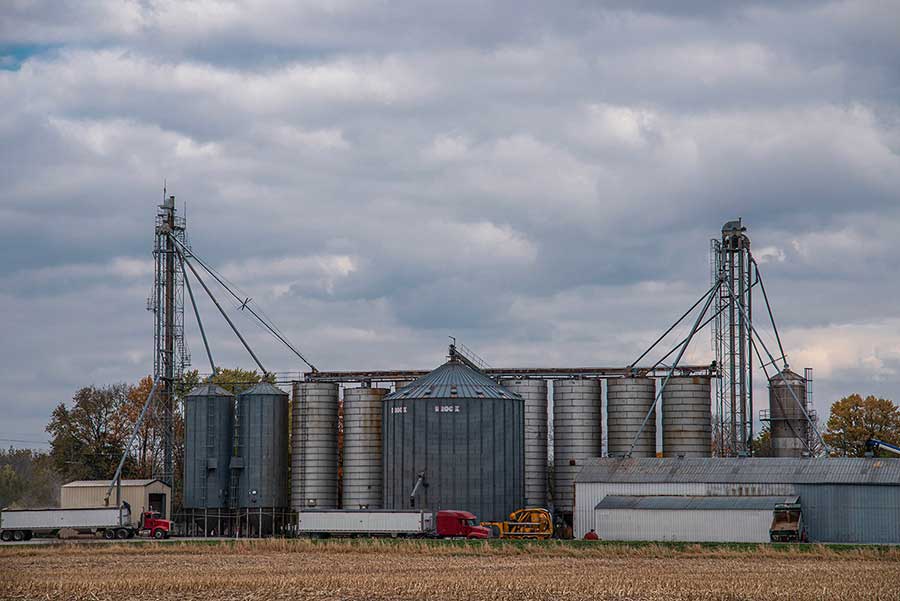Foundation
The following report provides an analysis across three topics: transportation, hazard mitigation, and public facilities and services
Key Findings
- Most streets are not congested and have plenty of capacity for growth. Some sections of SR-15 and SR-13 in the City of Wabash are nearing capacity and may experience peak hour congestion.
- Pavement and bridge deferred maintenance backlogs are sizable and is the primary focus of County and local street superintendents.
- Hazardous Materials Incidents were identified as the highest vulnerability in the County. This was based on factors such as risk probability, magnitude/severity, warning time, and the duration of the incident for each event.
- Approximately one-third of residents lack access to high-speed internet. Fiber optic internet is limited within the County; only the City of Wabash and the Town of North Manchester have access to fiber.
- Improving Combined Sewer Overflow (CSO) is an area of focus. Wabash and North Manchester both have Long-Term Control Plans related to their stormwater and sanitary systems.
Foundation
Transportation
The transportation section has two primary focuses. First, assess the community’s current and future multimodal transportation needs and opportunities from a high level. Second, consider how these needs and opportunities may affect population growth and decline.
Key Findings
- Traffic Congestion — Most streets are not congested and have plenty of capacity for growth. Some sections of SR-15 and SR-13 in the City of Wabash are nearing capacity and may experience peak hour congestion. Bridge and Pavement Maintenance Backlogs — Pavement and bridge deferred maintenance backlogs are sizable and is the primary focus of County and local street superintendents.
- Inadequate operations funding is affecting staffing levels and, as a result the ability to accommodate all service requests at Wabash Transit. For some, the agency’s services are their only means to live independently and without it, may need to move out of the area.
- Wabash Municipal Airport’s main runway is 600 feet short of the minimum needed to insure hangered jets at the airport. Extending the runway makes the airport and county more attractive to large business owners want to fly into town when visiting their places of operation.
- While most neighborhood and downtown streets are walkable and bikeable, other busy thoroughfares are not and may discourage walking and biking. Shared-use paths in Wabash provide a recreational amenity for those who travel to them. These quality-of-life amenities are important to those considering whether to move to the area.
- Both Wabash and North Manchester have attractive downtowns with a strong sense of place. Beyond these places, a number of corridors lack needed infrastructure and visual enhancements to be recognized as authentic, desirable places.

Public Facilities and Services
The Public Facilities and Services chapter takes inventory of the different utility services, facilities, and infrastructure that are currently provided by the City of Wabash, the Towns of North Manchester, LaFontaine, Lagro, and Roann, and the unincorporated areas in Wabash County.
Key Findings
- Approximately one-third of residents lack access to high-speed internet. Fiber optic internet is limited within the County; only the City of Wabash and the Town of North Manchester have access to fiber.
- Improving Combined Sewer Overflow (CSO) is an area of focus. Wabash and North Manchester both have Long-Term Control Plans related to their stormwater and sanitary systems.
- Septic system monitoring and maintenance in the unincorporated portions of the county are necessary to protect and improve water quality. Failures of the residential septic systems, especially in clusters, are deleterious to surface and groundwater quality. These systems are prevalent outside of the water and sewer service areas and there have been recent, notable failures.

Hazard Mitigation
In order to promote safety and resiliency, a community’s comprehensive plan should work in tandem with its hazard mitigation efforts. This chapter evaluates the primary findings of the 2019 Wabash County Multi-Hazard Mitigation Plan and identifies other potential hazards that were not included in the latest plan.
Key Findings
- Hazardous Materials Incidents were identified as the highest vulnerability in the County. This was based on factors such as risk probability, magnitude/severity, warning time, and the duration of the incident for each event.
- Public education and outreach is the County’s highest priority mitigation practice. It meets the criteria of 5 out of the 6 primary mitigation strategies and can apply to all 11 identified hazards.
- Biological Hazards, including global pandemics, are not addressed in the current MHMP. These types of hazards follow similar patterns to Natural Hazards.


.png)
